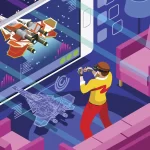Latest UN study finds artificial intelligence will surely take over these jobs soon: Report
A rising wave of interest in generative AI and its applications in chatbots has sparked concerns over potential job displacement. According to a UN study published on Monday, generative AI is not anticipated to entirely replace individuals’ employment, but rather to automate certain aspects of their responsibilities, thereby affording them more opportunities for other pursuits.
Nevertheless, the study also cautioned that clerical work would bear the brunt of this impact, potentially affecting female employment disproportionately due to the higher representation of women in this field, particularly in wealthier nations. The parallels drawn with historical scenarios such as the apprehensions accompanying the introduction of the moving assembly line in the early 1900s and mainframe computers in the 1950s underscore the gravity of these concerns.
In contrast, the report by the International Labour Organisation suggests that “most jobs and industries are only partially exposed to automation and are thus more likely to be complemented rather than substituted by AI.” This implies that the most pronounced effect of technology would be to enhance and support human labor, rather than replace it entirely.
The report identifies clerical work as the occupation most susceptible to the impact of Generative AI, which has the capability to create text, images, sounds, animations, 3D models, and other forms of data. Approximately a quarter of tasks within clerical roles are deemed highly vulnerable to possible automation. Conversely, the exposure of most other professions, such as managerial and sales positions, is relatively limited, according to the report’s findings.
Notwithstanding these insights, the UN research underscored that the consequences of generative AI on vulnerable labor could be “severe.” Consequently, the study urges policymakers to interpret its findings not as a source of reassurance, but rather as a clarion call to formulate policies that can effectively address the imminent technological transformations.
Top of Form




































